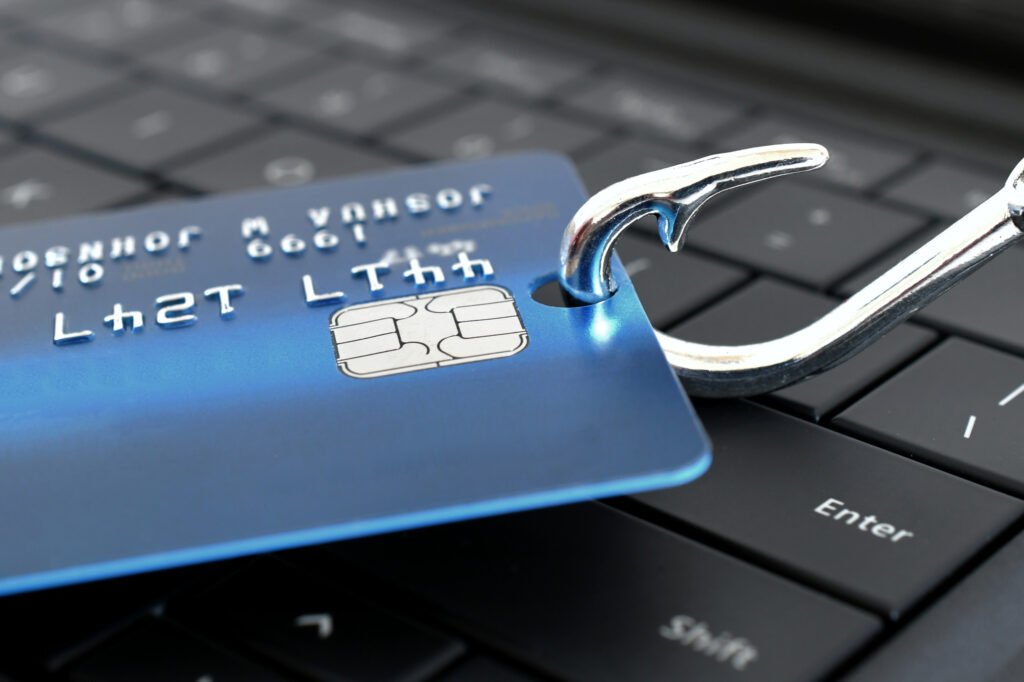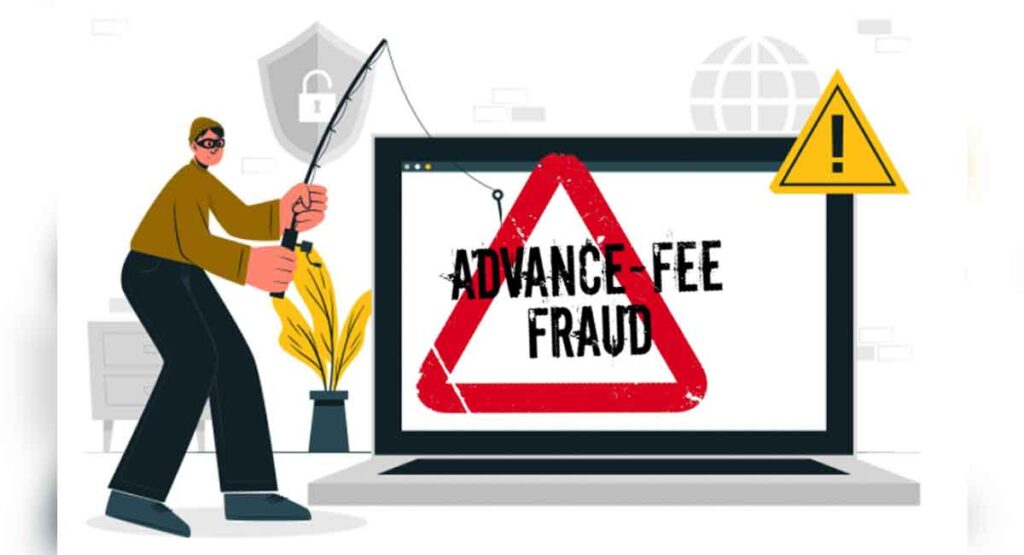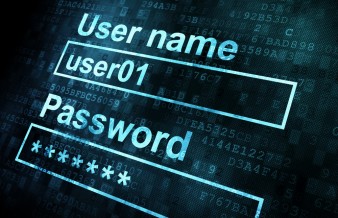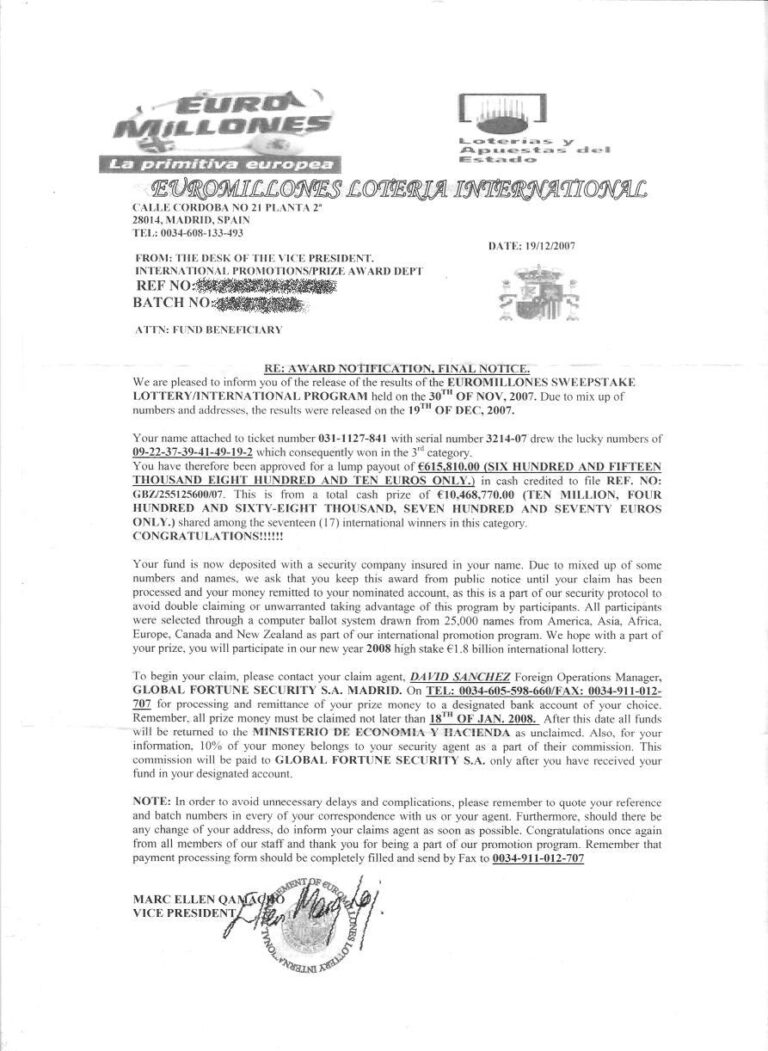Social Scams And Fraud: The Latest Threat
Fraud-induced social isolation is a serious social problem that has gained prominence in the 21st century. Fraudsters use various communication platforms to target their victims, who are mostly unaware of the tricks being played on them. The increasing number of social media users makes it easy for frauds to spread their schemes and gain access to personal information. Fraud is everywhere and you need to be aware of the dangers so you can avoid becoming a victim.
A scammer will contact you on social media and try to convince you that he or her is a victim too. He or she will tell you that a bank account was hacked and ask you to send money to recover the stolen money. Another common scam is when someone claims to represent your company and tells employees to misappropriate company funds. A third type of social scam involves someone pretending to be a family member or friend of someone in the military and asking for money to bail them out of jail. Anyone can fall for these schemes if they’re not aware of how they work.
Once an account has been hijacked, a social scammer will often ask for money or personal information under false pretenses. For example, he or she may claim that his computer was blocked from accessing the internet or that he was denied a debit card payment. The social scammer will then ask people to send him money or identifying information so he can bypass these problems. Someone posing as a military representative may also tell people that their loved ones are being detained in Southeast Asia and request money for their release. In addition, someone claiming to be a police officer may contact people and ask for large amounts of cash in exchange for preventing an arrest.
You should know that cons are usually based on false promises and patriotism. For example: A con artist posing as a soldier may tell people he’s been sent on a dangerous mission abroad. Alternatively, someone claiming to be a police officer may tell people their relative has been arrested and asks them to send payment for his bail. Finally, someone claiming to be an emergency worker may call people with phony fire alarm codes and say the building is on fire. He or she will then ask you to pay him money so he can put out the false alarm- before telling you it’s actually an emergency situation.
You need to be wary of all types of social scams- even those that seem harmless at first glance. Being tricked into sharing personal information can compromise your safety and security, causing irreparable damage to your reputation and wallet. Therefore, it’s essential that everyone know how these cons work so they can protect themselves against them.
Social engineers use psychological exploitation to manipulate people’s vulnerabilities in order to emotionally attack them. This research looked at 100 phishing and 100 advance-fee-scam emails, and examined the persuasive techniques utilized by social engineers for their own personal gain. It revealed that alert and account verification were employed by scammers as attention grabbers in phishing emails which were often given urgency through a threatening tone. Conversely, timing wasn’t seen as a top priority in advance-fee-emails, with potential monetary gain being the key factor instead; tempting victims with rewards such as business proposals and unclaimed funds. The findings demonstrate that perpetrators of social engineering use statements in positive and negative ways alongside authoritative and urgent persuasions to coerce innocent people into responding. Unfortunately, it is highly unlikely that online fraud will ever be fully eradicated; however, the most effective way of mitigating these attacks is informing the public about potential threats from social engineers. This can only be done via education, this requires authorities to allocate more staff and resources to investigate cybercrime whilst adequate legislation is sorely needed regarding online frauds. Ultimately though, it seems that education is still the most effective approach when fending off online scams. Thus, it is important social scientists continue delivering knowledge on.
Keywords: Advance-Fee Scam; Internet Fraud; Online Fraud; Phishing; Social Engineering
Introduction
Recently, scholars have studied online fraudulent activities in terms of social engineering (Blommaert & Omoniyi, 2006; Holt & Graves, 2007; Huang & Brockman, 2011; King & Thomas, 2009; Mann, 2008; Ross, 2009; Workman, 2008; Zook, 2007). In doing so they have concentrated on the exploitive nature of the deceptive communications used by social engineers to perpetrate their schemes. It has been assumed that people can be duped because they are either ignorant or naïve (King & Thomas, 2008). However this study aims to demonstrate that it is not necessarily this gullibility or lack of knowledge which enables successful frauds. It reveals instead that social engineers take advantage of human weaknesses to induce desired responses and procure privileged information via mailssent with an emotionally manipulative content. By disguising their requests as attractive offers these fraudsters manipulate victims into a vulnerable state.
The severity of online fraud calls for an examination of the crime. According to the Consumer Sentinel (US Federal Trade Commission, 2008), there was an increase in 2007 with 221,226 complaints about Internet-related fraud compared to 205,269 the year before. Email communication is a major factor in such crimes; in 2008, the Internet Crime Report (National White Collar Crime Center, 2008) reported that email was employed in 74% of Internet frauds. The total dollar loss in 2009 totaled $559.7 million – drastically increasing from $295.1 million from the previous year and the average cost per loss being $575 with some victims facing up to $1500 stolen by advance-fee scams (The Internet Crime Complaint Center, 2009). Even more alarming are the emotional repercussions when becoming a victim of computer fraud, sometimes leading to disorders such as post traumatic stress disorder (Carey, 2009). The US Federal Trade Commission reported that 31% of identity theft victims had credit cards taken out in their name, requiring 40 hours or more to clear up matters like harassment by creditors (48%), loan rejections (25%) and criminal investigations (12%). According to data retrieved from the Internet Crime Complaint Center, the median loss filed per victim was the highest among check fraud ($3000), confidence fraud ($2000) and Nigerian advance-fee fraud ($1650). In one rare and extreme case, a British man committed suicide when victimized by an Internet moneylaundering scam (BBC News, 2004).
The Social Engineering Perspective

The most direct discussions on social engineering can be found in applied psychology (Long, 2008; Mann, 2008; Raman, 2008; Thompson, 2006; Workman, 2008). The term “social engineering” involves a process of deceiving people into giving away confidential information. Social engineers run a type of “con game” to scam people. Social engineers are individuals who intentionally mislead and manipulate people for personal benefit (Huang & Brockman, 2011). Mann (2008) defines social engineering as “to manipulate people, by deception into giving out information, or performing an action” (p. 3). A number of tactics are employed by the social engineer to impact the emotional state of the victim, consequently influencing their willingness to disclose personal information (Workman, 2008). Social engineering attacks can occur at the corporate or individual level. By use of deception, social engineers obtain personal information, commit fraud, or gain computer access (Thompson, 2006).
Gaining access to or control over an information system is not the only goal of a social engineering attack. Other goals may include obtaining money or other valuable items, such as financial records. A social engineer depends heavily on his or her ability to establish a trusting relationship with the target (Mitnick & Simon, 2002; Thompson, 2006). Social engineering attacks occur at both the physical and psychological levels. The most common places where social engineers look for unauthorized information and access and work toward a psychological attack include the workplace, telephone, trash cans, and the Internet. Psychological attacks focus on persuasion, imitation, ingratiation, conformity, and friendliness (Workman, 2008).
Social engineers rely on cognitive distortions or errors in the thought process to initiate and execute their attacks (Raman, 2008) and elicit automatic emotional responses from their victims. Cognitive biases include choice supportive bias, exposure effect, and/or anchoring (Raman, 2008). Choice supportive bias occurs when a person tends to remember past experiences positively rather than negatively (Mather, Shafir, & Johnson, 2000). For example, a person purchasing items on eBay may inadvertently enter his or her credit card information on a fraudulent website posing as eBay and claiming not to have received payment for an item purchased. Confirmation bias states that people gather and interpret information in a way that confirms their beliefs (Nickerson, 1998). For example, if employees regularly see supervisors wearing certain uniforms, they will not be alarmed if an imposter wears the same uniform. Therefore, the social engineer can gain access without having to identify himself. The exposure effect states that people like things and people that are familiar to them (Zajonc, 1968). For example, someone who is active in online social networks is more likely to visit a malicious website that purports to offer an “online dating service” Anchoring means that a person focuses on identifying a salient feature (Tversky & Kahneman, 1974). For example, fraudulent websites that display identical logos of actual banks can deceive visitors.
Social engineers rely on cognitive distortions or errors in the thought process to initiate and execute their attacks (Raman, 2008) and elicit automatic emotional responses from their victims. Cognitive biases include choice supportive bias, exposure effect, and/or anchoring (Raman, 2008). Choice supportive bias occurs when a person tends to remember past experiences positively rather than negatively (Mather, Shafir, & Johnson, 2000). For example, a person purchasing items on eBay may inadvertently enter his or her credit card information on a fraudulent website posing as eBay and claiming not to have received payment for an item purchased. Confirmation bias states that people gather and interpret information in a way that confirms their beliefs (Nickerson, 1998). For example, if employees regularly see supervisors wearing certain uniforms, they will not be alarmed if an imposter wears the same uniform. Therefore, the social engineer can gain access without having to identify himself. The exposure effect states that people like things and people that are familiar to them (Zajonc, 1968). For example, someone who is active in online social networks is more likely to visit a malicious website that purports to offer an “online dating service” Anchoring means that a person focuses on identifying a salient feature (Tversky & Kahneman, 1974). For example, fraudulent websites that display identical logos of actual banks can deceive visitors.
Some common social fallacies may arise from the fundamental attribution error, the salience effect, and the constraint of conformity, compliance, and adherence. The fundamental attribution error states that individuals assume the behaviors of others and directly reflect enduring characteristics that define the person (Gilbert & Malone, 1995). Therefore, social engineers attempt to make a positive first impression to gain their victim’s trust. However, Huang and Brockman (2011) have also shown that social engineers have used persuasive statements in positive or negative tones-or both-to attack online users. The salience effect states that a person who stands out the most in a group has the least influence (Taylor & Fiske, 1975). For this reason, social engineers are experts at conforming to their environment. The pressures of conformity, compliance, and obedience cause people to change their behavior (Raman, 2008). Social engineers have learned to predict responses to these pressures. Through the use of authority and manipulation, a social engineer can pretend to be a leader and trick an employee into revealing important information without revealing themselves.
Categories of Social Engineering
Social engineering can be divided into two distinct categories: computer-based deception and human interaction-based deception. In both methods, the social engineer conducts some sort of background research on his target before carrying out an attack. An example of this is entering a company’s premises and reading names off the information board. These boards usually contain helpful information, including the names of departments and sometimes the names of department heads. Another method of background research is “dumpster diving,” which simply involves going to the target organization’s dumpsters and analyzing the contents. When people and organizations do not think too much about what they throw in the trash, the contents of their dumpsters can prove valuable to a social engineer.
In the computer-assisted method of deception, the social engineer relies on technology to trick the victim into providing the information needed to achieve the goal. This can be done, for example, through the use of fake pop-ups that trick victims into thinking they need to divulge passwords in order to stay connected to the company’s computer network. The authorization information is then forwarded to the social engineer, who can use this information to gain access to the corporate network (Gulati, 2003).
The human interaction based approach of social engineering is primarily based on deception through human interaction. The attack becomes successful by exploiting the victim’s natural human inclination to be helpful and popular (Gulati, 2003). This can be done through various forms of impersonation. For example, the social engineer may impersonate a technician, IT support staff, colleague, manager, or trusted third party to gain the victim’s trust and thus gain unauthorized access to the desired information.
Types of Social Engineering Attacks
The variation and scope of social engineering attacks are limited only by the creativity of the hacker (Manske, 2000). These attacks prove effective because they target the most vulnerable link of any organization, its employees. Social engineering attacks have the potential to bypass the best technical security measures and expose an organization’s critical information. There are numerous types of social engineering attacks; some of which include Trojan emails and phishing messages, advance fee fraud, impersonation, persuasion, bribery, shoulder surfing, and dumpster diving.
Trojan emails and phishing messages are two of the most common examples of social engineering attacks.
These are technical attacks, but rely on strategically constructed messages to trick victims into opening attachments or clicking on embedded hyperlinks. This makes these classic examples supporting technical exploits a very common feature of many social engineering attacks. According to Manske (2000), these attacks serve as a stepping stone to the attacker’s real goal, which may be, for example, complete control over a company’s network servers. Phishing emails or Trojan attacks can be used to collect private information or system credentials, or possibly compromise the security of the user’s operating system by installing malicious software that gives the attacker full access to the system. In 2007, phishing attacks were responsible for more than a quarter of all reported computer crimes (Richardson, 2007).
Another common technique used by social engineers is the use of fake credentials. This can be a simple trick of printing fake business cards or a more sophisticated tactic of creating fake ID cards or security badges.
Thank you to modern technology, it is now easy to create hard-to-detect duplicates of ID cards. For this reason, attackers do not always have to create the most realistic fake IDs because they are able to sell a good story to go with it. According to Applegate (2009), during a vulnerability assessment, an attacker created a very simple green plastic card ID with a commonly known recycling symbol. When company security personnel searched the dumpsters, the attacker posed as a recycling coordinator conducting a compliance check. The attacker claimed that management was facing a large fine because the company was not sorting its recyclable waste (Applegate, 2009). Because of this simple trick, the company’s supervisors personally ensured that all paper products were set aside for the remainder of the audit. Each day, the social engineer returned to collect the presorted paper products and calmly search through them for valuable information. The attacker was so successful with this scam that he was given a tour of the company during the week and could come and go as he pleased after the employees got used to seeing him every day.
Social engineers can use a variety of techniques to impersonate a person. Attackers often conduct impersonation attacks by calling employees of the targeted company and pretending to be employees of another department, reporters, or even students conducting research. Social engineers even conduct attacks in person, using fake credentials or a good story to infiltrate a selected company and bypass security.
Other techniques commonly used by social engineers are persuasion attacks. In persuasion attacks, the social engineer gets a person to divulge important information or otherwise assist in the attack. Often, the victim is made to believe that the attacker is doing them a favor in some way. The victim then feels obligated to help the attacker, even if it violates company policy. In a variation of this attack, the social engineer uses persuasion techniques to get the employee to bypass company procedures in order to speed up the process or bypass the problem altogether.
Types of Online Fraud
Some of the more common forms of online fraud are credit card fraud, identity theft fraud, web and e-mail spoofing (referred to as phishing), IM spimming (similar to spoofing, but involving the use of instant messaging), high-tech disaster fraud, and online hoaxes (referred to as advance-fee fraud) (Harley & Lee, 2007; McQuade, 2006). While considerable time could be spent on each form of fraud, the current work primarily focuses on web and e-mail spoofing (phishing) and online hoaxes (advance-fee fraud), since these are two of the most well-known and recognizable scams involving a variety of deceptive techniques exploited in online communications.
Phishing
Phishing is a growing area of Internet fraud with the number of victims on the rise. In 2007, the number of US adults who reported receiving phishing e-mails was 124 million, up from 109 million in 2005 (Litan, 2007). According to Jakobsson and Meyers (2007: p. 1), phishing is a form of social engineering in which the attacker (or phisher) fraudulently retrieves confidential or sensitive information by imitating a trustworthy or public organization. Phishing, sometimes called brand spoofing, involves the use of e-mails that originate from businesses with which targeted victims have been, or are currently associated.
In the past few years there has been an alarming trend both in the increase and complexity of phishing attacks. Some of the most common businesses and industries associated with phishing include banks, online businesses (e.g., eBay and PayPal), and online service providers (e.g., Yahoo and AOL). Unsuspecting victims receive e-mails that appear to be from these entities, usually suggesting suspicious activity regarding the account and requesting personal information (e.g., personal identification numbers, credit card numbers, and social security numbers). The phisher ultimately seeks to use the victim’s personal information for individual gain (Larcom & Elbirt, 2006). The e-mails convince up to 20 percent of recipients to respond to them, sometimes leading to financial losses, identity theft, and other forms of fraud (Kay, 2004). Association with certain types of “brands” is an effective technique that allows scammers to steal information directly or be able to use social engineering to persuade users to disclose financial information (James, 2005; Harley & Lee, 2009).
Phishing Operations
Two basic methods are commonly employed by phishers to steal valuable personal identification (APWG, n.d.). The first method is the technical artifice method, which involves infecting personal computers with malicious software. This software is capable of recording keystrokes entered by the user, and sending that information to the phisher. This software can also redirect Internet users from legitimate websites to false ones via a remote connection. The next method that phishers employ is social engineering, which, is defined by Yoo (2006) as “gaining intelligence through deception or also as using human relationships to attain a goal” (p. 8). Phishers using social engineering techniques employ deceptive devices to trick Internet users into a situation where they are willing to disclose sensitive information. Usually, the social engineering methods launch a false e-mail urging the receiver to click on a linked website appearing to come from a genuine business. After clicking the link, the user is actually brought to a fraudulent site asking for personal financial information such as credit card or bank account numbers. Phishers then use the records they obtained to swindle money from the credit card or bank account, or even apply for a new credit card with a false identity.
Phishing tactics and targets vary in social engineering applications. While some simpler e-mails contain fill-in forms, other more complex ones direct victims through a variety of synthetic websites. As phishing is performed mostly for financial reasons, the most commonly attacked sector in 2009 was financial services, which accounted for 74% of reported phishing activity for that year (Symantec Corporation, 2009). The next most active area of phishing was the Internet service provider, at 9%. Although fraudsters are not as likely to produce monetary gains in this area, it is likely that they are able to use the stolen information and accounts to further their phishing activities, such as sending mass e-mails through the stolen accounts. The third most lucrative segment for phishers is retail, accounting for 6% of phishing attacks. Phishers attempt to purchase goods online and request that the items be shipped to a location which the phisher has access to. The Symantec study (2009) revealed that the difference between financial scams (74%) and all other areas (26%) lies in the relative ease and immediate financial reward for successful deception.
One common feature that phishing e-mail messages attempted to do is to imitate a creditable entity. Some fraudsters use tricks to make their e-mails seem more legitimate. These tricks include the use of company logos, hyperlinks to the home page of the company, false return addresses. The next step in the phishing process is to create a message that requires the recipient to take a specific action, such as replying to the phishing e-mail, completing a form provided by the e-mail, or clicking on a guided link. The content within the messages vary, with the most common form claiming to require information for account verification or security upgrade. Because fraudulent websites and e-mail messages are detected quickly and subsequently blocked, the messages are typically written to instill a sense of urgency in the reader. Criminals push for their victims to respond immediately by threatening termination of the account if a reply is not received promptly (MailFrontier, 2004).
After the users have clicked the fake link and entered into the spoofed site, it is essential that the web pages appear authentic to the user. The deceptive online features used by phishers include company logos and slogans, page layouts, fonts, and color schemes (MailFrontier, 2004). Many online phishers are not only effective in replicating the graphic look of legitimate websites, but also in adding some of the indicators users typically look for a website’s security and authenticity. These include the use of a safety padlock in a menu bar, an https device in the URL, and a “TRUST-e” symbol (University of Houston, 2005). In earlier days, one could examine a website’s URL and be more confident of detecting a counterfeit site; since early phishers used domain names that were only similar to the valid company they were spoofing. Today’s fraudsters, however, can make the company’s actual domain name visible, such as www.ebay.com, but when the user clicks on the hyperlink it really directs them to the phisher’s website.
Advance-Fee Fraud

As it has been demonstrated criminals use the Internet to commit all types of fraud; however, the largest dollar losses are attributed to advance-fee fraud e-mail messages. These messages are sent from individuals claiming to need assistance moving a large sum of money out of their country. Receivers of these messages who respond often become victims of fraud and identity theft. There has been a large amount of criminological research that has explored the prevalence and incidence of fraud, where criminals gain property or money from victims through deception or cheating. Most fraud involves some type of interaction between the victim and the offender, either through face-to-face meetings, or telephone-based exchanges (Holt & Graves, 2007). As individuals around the world have increasingly become dependent on the Internet, criminals have begun to use it as a means to commit fraud (Wall, 2001).
Advance-Fee Fraud Operations
Advance-fee fraud gets its name because these schemes require the victim to pay the scammer in advance with the promise of receiving rewards later. This scam is neither the most costly nor frequent Internet crime; however, it remains to be the most ubiquitous and well-known of all cyber-crimes. Nigeria 419 scams are a very common type of advance-fee fraud where scammers generally claim to be from Nigeria and execute a variety of deceptive schemes that require victims to front money (Microsoft, 2009). Scams like the Nigeria 419 scam are frequently carried out from areas such as local cyber cafes, which have become the target of more recent raids from Nigeria’s Economic and Financial Crimes Commission (Lilly, 2009). Nonetheless, Internet scammers often remain undeterred by law enforcements efforts (Goodman & Brenner, 2002). The circumstances in Nigeria illustrate the conditions created by lenient laws and enforcement concerning the Internet.
Advance-fee fraud initially appeared as handwritten letters in postal mail or faxes in the 1980s (United States Department of State, 1997). These scams began to spread via e-mail in the early 1990s as individuals began adopting e-mail technology. In the past decade, advance-fee schemes have been labeled as spam, or unsolicited bulk e-mails with multiple messages that offer illicit or counterfeit services and information (Wall, 2004).
Although there may be individuals who act alone to initiate contact and solicit information, the scammers generally work in small teams with a specialized division of labor. Nigerian scammers are different than con artists who hope for a quick score by taking their gain in a single transaction—known as a short con. Nigerian scammers work on a long con, one designed to play out over time and gradually drain a victim’s assets. Contrary to public perceptions, the goal of most Nigerian advance-fee fraud scams is not to simply empty a bank account by immediately obtaining financial information as some other scams do.
Rather than obtaining a quick score, the scammers intend to draw increasingly large sums from the victim, who is manipulated into looking for additional sources to supply them. The relationship between the scammer and the victim can drag out for months, and the transformation can be complex (NExT, 2007). The US Secret Service (n.d.) adds that, if carried to the conclusion, the victim often will be enticed to come to Nigeria for the final financial coup de grace
Advance-fee scams have many variants, but they all share the same essential characteristics. First, a large sum of money will become available because of some tragic event. Most of the time the event will be very specific, such as a plane crash, major catastrophe (World Trade Center in 2001 or the Earthquake in Haiti 2010), an auto accident, political conflict, or a fatal disease. Usually they will include legitimate names of the wealthy victim. This allows the scammer to provide a URL link to a legitimate source that confirms both the accident and the actual death, providing credibility. Second, the scammer reports that the money remains unclaimed and provides reasons why swiftness is needed in order to claim it, and secrecy needs to be maintained to protect the project
Third, a reason for the need to rush the transfer, usually because of political conflict or a looming deadline in which the money will be given back to the bank or government, adds a sense of urgency to the transaction. Fourth, the scammer always implies that the transaction needs help from a foreigner in order to evade laws, or outsmart others who are also after the funds, or to avoid leaking that the fortune exists. This is done to emphasize the compelling requirement of secrecy. Finally, the direct attempt to establish direct personal contact between the scammer and the recipient comes. Occasionally, this may be a direct request for information, including personal details and bank account number and bank’s routing number. However, in most variations, the scammer initially requests only a reply, which can lead to extended email exchange or phone calls (Sturgeon, 2003). In some circumstances, the e-mail will include attachments containing pictures or other information to improve credibility. However, the attachments may also contain malware that includes spyware or worms capable of extracting the recipient’s e-mail address book or allowing the users’ PC to be used to relay further e-mails through a legitimate system.
Given the unlikely scenarios, it might seem implausible that any Internet users, most likely people with some sophistication and basic literacy skills, would fall victim to the scams. At least with increasing visibility and awareness of the scam, it would seem that, the prevalence of victimization would decrease. Nevertheless, victimization continues to increase
The Internet has greatly expanded the pool of potential victims while reducing the costs of committing fraud. These and other factors have resulted in deceptive e-mails being sent out to an estimated 10 million-plus recipients worldwide daily, which is a very conservative estimate (King & Thomas, 2008). Scammers send out large numbers of e-mails in order to capture the relatively small number of respondents who are attentive to the persuasions embodied in the e-mails. The investigation below attempts to address what deceptive techniques have been used in scam e-mails. Generally when studying crime, researchers will focus on the motivations of the offender. Instead of focusing on motivations, this study investigates the persuasive techniques that drive victims to fall for the online fraudsters’ scams.
Methodology

To examine the deceptive operations and techniques used in phishing and advance-fee e-mails, the study has collected a sample of 200 fraudulent e-mails related to the two types of scam. These e-mails were gathered from a data archive maintained by an anti-phishing site, MillerSmiles, in Great Britain, and also from the inbox of the researchers. A total of 100 phishing e-mails were gathered from the MillerSmiles site, and another 100 advance-fee e-mails were gathered collectively from the MillerSmiles site, as well as the researcher’s mail inboxes. No overlap in the collected data existed between the two sets of e-mails. The archived e-mails were used to increase the number and diversity of the sample e-mails
The 100 phishing e-mails were strategically gathered from the MillerSmiles site. The MillerSmiles site offers an alphabetical listing of company names. At the bottom of the homepage they offer a list of top targets by scams. From here, the top three targets were selected (PayPal, eBay, HSBC bank) and to have one main banking institution from the United States and the UK, Bank of America and Abbey bank were chosen. In order to gather 100 e-mails, 20 were collected from each institution.
For each of the five institutions, e-mails were selected between 6/08/2010 (the day that the e-mail extractions began) and 6/08/2009 (retrospective to the previous 12 months). The MillerSmiles site offers a collection of 300 e-mails for each institution. All e-mails between the aforementioned dates were printed and then numbered, selecting every 5th e-mail for the sample. If any e-mail was repetitive or used any language other than English a rotation would be skipped (e.g. if e-mail 5 is the same as e-mail 1, e-mail 5 is skipped and e-mail 10 is the next to be chosen) until 20 e-mails were reached for a chosen institution. Once 20 e-mails were selected for each institution, the e-mails were printed and coded based on the codebook created for this study.
Another 100 e-mails for advance-fee frauds were gathered from the inboxes of the researchers as well as the MillerSmiles website. Due to the low number of advance-fee e-mails on the MillerSmiles site, only 15 e-mails were gathered, with the other 85 e-mails coming from the researchers’ inboxes. The selection criteria and process for the previously mentioned 85 e-mails were consistent with that of prior studies (Blommaert & Omoniyi, 2006; Ross, 2009; Huang & Brockman, 2011). The criteria were the e-mails had to be written in English despite grammatical errors or typos found in the text; they had to appear to be full letters, showing an e-mail address, subject line, salutation, body text, and closing; and they had to reflect the sender’s control of funds, power of monetary distribution, and knowledge of scheme procedures. Spamming e-mails that did not fit into solicitations for personal privileged information or monetary funds were excluded. For example, these exclusions included e-mails promoting low home mortgage rates, brandname products at extremely low prices, online dating, online drugs, sex enhancement pills, and x-rated entertainment.
Measuring Triggers and Persuasions
Each of the 100 phishing e-mails were read and coded based on triggers. Triggers can be defined as the main reason or subject of the deceptive e-mail. In phishing mails, these triggers can be an account update, account verification, account suspendsion/disabled/frozen etc. Triggers for the 100 advance-fee emails were coded based on incentives. Incentives are classified into five types according to the e-mail content: Nigeria 419 funds, lottery winning, working at home, job offer, and business proposal.
Eight types of persuasive techniques were applied to the 200 e-mails. These techniques were authority, urgency, tradition, fear/threat, attraction/excitement, pity, politeness, and formality. Definitions of these persuasions are based on Capaldi (1971), Huang and Brockman (2011), and Ross (2009). After coding the e-mails, the collected data were entered into Microsoft Excel and then transferred into SPSS. Definitions of the persuasions are provided below.
- Authority: Persuasive statements used to create legitimacy, trust, and credibility. Institutional markers such as affiliations and professional titles are included;
- Pity: Refers to sympathy and charity expressed in the messages;
- Tradition: An appeal to ideal values such as honor and legacy commonly recognized by the public;
- Attraction: An incentive which can draw excitement or a sense of subversive joy. Examples of attraction include huge cash prizes, easy job offers, or opportunities for profits;
- Urgency: A stress on the exigency of the situation. Urgent statements are used to stress the requirement to respond promptly to receive the offer or award. They can also be stated in a negative tone, such as threat to disable account if a request is not fulfilled in time;
- Fear/threat: Used to intimidate the reader. Examples of fear/threat include; threat to delete account, freeze account, or suspend account;
- Politeness: Used to construct the author as a real human being. Examples of politeness would be the use of please, thank you, etc.;
- Formality: Professional terms used to convince the reader that the letter is legitimate and safe. Examples of formality include the use of confidentiality, safety, etc.
Social engineers take advantage of all elements of the emails they send. One need not to read the body of the e-mail to see the persuasive phrases social engineers use. Often the subject line, the title of the e-mail which highlights the main concern, contains such words as alert, warning, attention, and update followed by exclamation points to strike fear in the reader. Sometimes, social engineers use friendly salutations (e.g., Dear Valued Customer/Member) and closures (e.g., Best Regards, Sincerely, Thank you) to make a positive first impression and familiar appearance. Regardless of the approach used by scammers, the e-mails always show institutional affiliations. The authors have to enhance fundamental attributions to encourage recipients to comply with the e-mails’ request for action (Gilbert & Malone, 1995). R
Results
Table 1 identifies the triggers that were used in phishing mails.The top three triggers used by scammers were: alert, warning, attention (18%); account verification (18%); and invalid login attempts (17%). Phishers often use triggers that catch the reader’s attention and immediately cause a sense of fear. For example, senders of fraudulent e-mails will include subject lines such as “NOTIFICATION OF LIMITED ACCOUNT ACCESS” or “Attention Your Account Has Been Violated!” to strike immediate fear in the reader. The “others” category is made up of triggers such as policy violation, purchase cancellation, reward offer, complete survey, leave feedback, and auction response. Due to the low frequency of occurrences these categories were grouped into one category for better analysis.
Table 1.
Triggers used in phishing e-mails (N = 100).
Triggers %
Security upgrade/update of account 13%
General (unspecified) upgrade/update of account 6%
Alert, warning, attention 18%
Account verification 18%
Account suspension/disabled/frozen 8%
Purchase confirmation 8%
Invalid login attempts 17%
Identity verification 5%
Other 7%
Total 100%
Scammers also use urgent statements to persuade readers to reply quickly to their e-mails. Table 2 portrays that 71% of the phishing e-mails expressed urgent statements. For example, senders will include statements like “you have to log-in within 48 hours after receiving this notice to re-update your Internet banking account for urgent review,” “You have 3 days to confirm account information or your account will be locked,” and “You have 24 hours to click on the link below and confirm your PayPal personal information, otherwise your ATM Debit/ Credit Card access will become restricted.” Other words like “ASAP”, “account suspension”, “account deleted”, “new message waiting”, and “new bill” are used sometimes followed by multiple exclamation points to instill a sense of urgency in the recipient.
Table 2 also shows that fear/threat is used in 41% of the phishing e-mails. Using fear/threat allows the phishers to demand readers to respond, for fear that not responding in a timely manner will result in unwanted consequences. For example, senders will use phrases such as “failure to verify account will lead to account suspension,” “your account has been limited,” and “due to an unusual number of login attempts, we had to believe that, there might be some security problem on your account.” Senders will often inform the users of why they have received the messages, command the users to take proper action and threaten them with unwanted consequences if they do not comply immediately. This logical sequence is consistent with the notions of conformity, compliance, and obedience (Huang & Brockman, 2011).
Polite statements are often used in phishing e-mails as a way to build a friendly relationship between the phisher and the potential victim. Seventy-four percent of the phishing e-mails used polite statements. Sometimes, social engineers use friendly salutations (e.g., Dear Valued Customer/Member) and closures (e.g., Best Regards, Sincerely, Thank you) to make a positive first impression and familiar appearance. Scammers will sometimes use formality in their e-mails to make the reader feel safe. Of the e-mails analyzed, 55% used formality to attempt to establish a trusting relationship with the reader. Phishing e-mails will often use confidential statements or the use of safeguards to ensure the reader that no one else will be able to see the information except for the “trusted entity”. For example, senders often include statements like “it may contain confidential or sensitive information” or “Unauthorized recipients are requested to preserve this confidentiality”.
Table 2.
Persuasions used in phishing e-mails (N = 100).
Types of Persuasions % Yes
Authority 100%
Urgency 71%
Fear/Threat 41%
Politeness 74%
Formality 55%
Table 3 details the average number of persuasions used across the triggers types in phishing e-mails. The triggers with the greatest mean number of persuasions utilized included: account suspension, disabled, or frozen (4.50); invalid login attempts (4.18); and identity verification (3.80). The grand mean suggests that scammers have used 3 or 4 persuasions on average per phishing e-mail. Further analyses were conducted to examine the average number of persuasions used per e-mail by financial institutions. The three greatest means were found in PayPal (3.75), Bank of America (3.75), and Abbey Bank (3.70). An ANOVA test was administered to test differences of group means amongst institutions, the results showed no statistical significance. Results suggest that the average number of persuasions used by phishers did not differ by the financial targets that they had chosen.
Table 3.
Number of persuasions used in phishing e-mails by trigger types (N =
100).
Triggers Mean number of
persuasions used
Security upgrade/update of account 3.54
General upgrade/update of account 2.83
Alert, warning, attention 3.44
Account verification 3.56
Account suspension/disabled/frozen 4.50
Purchase confirmation 2.75
Invalid login attempts 4.18
Identity verification 3.80
Other 3.14
Grand mean 3.59
Table 4 displays incentives used in the advance-fee fraud e-mails. As the data show, fraudsters use Nigeria 419 funds (46%) and business proposals (41%) most often. Unlike phishing e-mails, advance-fee e-mails use direct incentives such as large sums of money, work-from-home jobs, and business opportunities to attract the attention of recipients.
Table 4.
Triggers used in advance-fee e-mails (N = 100).
Incentives %
Nigeria 419 funds 46%
Lottery winning 6%
Work from home 2%
Job offer 4%
Business proposal 41%
Payment approval 1%
Total 100%
Table 5 exemplifies the persuasions used in the 100 advance-fee e-mails collected for this study. Just as phishing emails use authority to create an image of legitimate entity, advance-fee e-mails also use authority as a way to develop legitimacy. However, persuasions are used more elaborately in advance-fee fraud e-mails. Social engineers attempt to explain the nature and source of the funds in detail in order to convince the reader that the offer is legitimate. As shown in the collected mails, social engineers pretend to be executives of corporations, attorneys, retired FBI officials, and doctors in order to further their credibility. Eighty-four percent of the advance-fee e-mails used authority to persuade readers to fall for the scam.
Table 5.
Persuasions used in advance-fee e-mails (N = 100).
Types of Persuasions % Yes
Authority 84%
Urgency 70%
Tradition 28%
Attraction/Excitement 94%
Pity 31%
Politeness 78%
Formality 24%
Urgent responses are critical for advance-fee fraudsters to scam their readers. If readers do not reply quickly, scammers run the risk of being caught and shut down. Of the e-mails reviewed 70% expressed urgent statements. Urgent responses used in advance-fee fraud e-mail are similar to those used in phishing e-mails. For example, social engineers will add statements like “Please I want you to quickly help me out of this bad situation because my life is not safe here,” and closing statements such as “waiting with thanks”. This sometimes entices the reader to hurry and respond because they believe someone’s life is in danger
Tradition is sometimes used in advance-fee e-mails to trigger an emotional response from the reader. Readers will sometimes respond to fraudulent e-mails in hopes that they can help a person, family, or organization in need. Social engineers often use tradition along with pity, using statements such as “My late husband who was a contractor with Zimbabwan government on commercial farming was assassinated with my only son by the Zimbabwan rebel troop,” “I am contacting you because of my inheritance fund that my late mother deposited in the famous banks in Cote d’Ivoire”, and “because of the war my late father sold his shipping company and took me to a nearby country Cote d’Ivoire.” Of the advance-fee fraud e-mails coded one of the most commonly used persuasions by social engineers in advance-fee fraud e-mails is attraction/excitement. Attraction/ excitement is used in advance-fee e-mails to make readers believe that they have just won a large sum of money or the opportunity to make a large sum of money by doing little or nothing in order to attain it. Ninety-four percent of all advance-fee e-mails tested used attraction/excitement. Social engineers often mention large sums of money to immediately cause a sense of excitement to the reader. Offers like “I was assigned by two of my colleagues to seek for a foreign partner who will assist us in the transfer of US $27,500,000.00,” and “If your company acts as the beneficiary of this fund 35% of the total sum will be for you for providing the account”. Another way attraction/ excitement is used is through the use of “lottery winnings”. Social engineers will use greetings such as “Attention lucky winner” and then go on to state “We are pleased to notify you the ‘winner’ of our Internet lottery draws.” The reader will then be instructed to give over confidential information in order to receive the large sum of money.
Pity, another persuasive element employed by social engineers, is sometimes used in advance-fee e-mails to trigger a sympathetic feeling from the reader. Thirty-one percent of the e-mails analyzed used pity as a way to obtain confidential information from the reader. Social engineers will fabricate stories of the death of loved ones or concerns of personal safety/ health for help. Pity along with tradition is used to dramatize their story and make readers feel sympathetic. Examples of pity include “I honorably inherited from my late father Mr. D. Mummar, who the Empigigo rebels killed recently in a political crisis in our country that resulted in war” and “the above sum belongs to our deceased father who died along with his entire family in the Benin plane crash 2003.”
Another persuasive element often used in advance-fee emails is politeness. Using polite statements allows the scammer to build a friendly relationship with the reader in hopes that the reader will reveal important information. Seventy-eight percent of the e-mails coded used politeness. Social engineers use friendly salutations and closings to make the reader feel as if there is a connection between him/her and the author of the e-mail often including text such as “Thanks for your greatest kindness,” “Thanks and god bless you and your family,” and “Please help me get out of this situation and our almighty will bless you.”
Lastly, it is important for the author of advance-fee e-mails to make the reader feel that the e-mails are safe and any information given by the reader will be used for only purposes stated in the e-mail. The use of formality is used in 24% of the tested e-mails. Statements of security and confidentiality include “I wish for the utmost confidentiality in handling this transaction” and “I assure you that this transaction is completely safe and legal.”
Table 6 describes the mean number of persuasions used by trigger types. The largest mean numbers of persuasions used by scammers can be found in business proposal (4.41), Nigeria 419 funds (4.11), and work from home opportunities (4.00). Overall, scammers used an average of 4 persuasions per e-mail. Among the mean differences of trigger types, the ANOVA test revealed a significance level of .028. It is suggested that business proposal, Nigeria 419 funds, and work at home involve a significantly greater number of persuasions used in advance-fee scams.
Table 6.
Number of persuasions used in advance-fee e-mails by trigger types (N =
100).
Trigger Mean number of persuasions used
Nigeria 419 funds 4.11
Lottery winning 2.33
Work from home 4.00
Job offer 3.50
Business proposal 4.41
Payment approval 3.00
Grand mean 4.09
Discussion and Conclusion
The analysis and results revealed in the study underscores the importance of examining triggers and persuasive techniques used in social engineering attacks. The findings indicate that alert/warning/attention and account verification were the two primary triggers used to raise the attention of e-mail recipients. These phishing emails were typically followed by a threatening tone via urgency. In advance-fee fraud emails, timing is a lesser concern; potential monetary gain is the main trigger. Business proposals and large unclaimed funds were the two most common incentives used to lure victims. In both phishing and advance-fee emails, authority and politeness were employed widely. It seems that social engineers intend to use the combination of these two persuasive techniques to increase the legitimacy of the e-mail and at the same time the sense of courtesy commonly seen in business practices.
This study also discovered that social engineers have constructed statements in positive and negative manners to persuade readers to fall victim to their scams. Online fraudsters have used e-mails to tap into emotions such as excitement, pity and fear to affect viewers. The use of authoritative and oftentimes emotional persuasions has caused readers to drop their guards against potential risks. The study showed that politeness and formality were used frequently as a way to make the reader feel comfortable and secure in responding to the e-mail. By exploiting human weaknesses, social engineers have strategized and carried out emotional attacks on innocent people. As social engineers continue to get better at attacks through deceptive persuasions, potential victims need to prepare themselves for counter attacks at any given time.
Social engineering attacks are easy to commit and very difficult to defend against because they focus on the human factors. Since most people are usually helpful in attitude and tend to believe that this type of attack will not happen to them, they are often fooled without even knowing they have been a victim of an online fraud. The natural human tendency to take people at their word continues to leave users vulnerable to social engineering attacks. Ultimately, the best way to defend against social engineering attacks is through education. This can be accomplished by training users to be aware of the value of the information resources at their disposal as well as by creating awareness of human hacking techniques, which makes it easier for users to detect a social engineer. Education has been a strategy used by governments and businesses to prevent online fraudulent acts. Efforts have been made by organizations to raise awareness of social engineering through speeches, pamphlets, web pages, and the delivery of security messages in e-mails sent to users (Huang & Brockman, 2011).
Cautions have also been raised concerning the psychological effects that educational campaigns may have on users (Bardzell, Blevis, & Lim, 2007; Emigh, 2007; Mann, 2008). Looking at it from a customer’s viewpoint, banks have been perceived as security providers who are assumed to offer protection advice and warnings to users. According to Mann (2008), although the strategy used has good intentions, when a user receives new communications from the bank about security updates, he/she has been pre-programmed to follow the instructions or visit the suggested link. Since ordinary users feel ignorant when it comes to IT, they know they must follow the instructions of the experts. Users will often follow their emotions and what is familiar to them to make their decisions on what to do, usually ignoring security threats, faulty traps, or future financial losses they are facing. Expecting users to be able to distinguish between a fraudulent e-mail and a legitimate e-mail and not to follow the instructions in the former is an unattainable expectation (Emigh, 2007).
It is very unlikely that advance-fee fraud and phishing e-mails will ever be completely eliminated. The creation of anti-spam laws such as the CAN-SPAM Act of 2003 in the United States and international directives by the European Union have had little impact on the volume of e-mails sent out daily (Wall, 2004). There is also no easy way to identify the fraudsters responsible for these messages due to the use of spoofing and software that conceal an individual’s location. Thus, it is difficult for law enforcement agencies to effectively deal with fraudulent e-mails
These challenges have led to a greater reliance on technological defenses developed by private sectors to combat social engineering attacks. Microsoft and other computer companies have embodied phishing filters, security firewalls, and e-mail authentication devices in their online application software as frontline barriers (Brandt, 2006; Kornblum, 2006). These providers are adaptive to the competitive environment and have the technical expertise to better control and monitor the flow of e-mail communications. Their supporting role in fighting online frauds has complemented many aspects of police efforts in crime prevention. As to ordinary citizens, preventative strategies remain the most practical and useful ones (Musgrove, 2005). These include never providing account information in response to a solicitation e-mail, constantly changing passwords, typing or copying URL addresses from legitimate sources instead of following a hyperlink embedded in an e-mail, and calling the financial institution directly when suspicions arise from an e-mail. Overall, a basic understanding of the operations of social engineering attacks coupled with constant skepticism will reduce chances of victimization of such attacks.
It is understandable that no easy solutions can be identified to prevent online fraud from occurring. Nonetheless, more legislative efforts in the area of online fraud and computer crimes, in general, are needed. By this it is meant that there must be adequate statutes addressing the various computer crimes and their punishment, and consistent rulings from the courts as to how the law can be applied to crimes online. Although governmental agencies are dedicating more staff and resources to the investigation and prosecution of computer crimes, many legal scholars question whether the legal system will be able to handle hightechnology crimes in the future. In many areas it seems that technology changes faster than the laws themselves. As soon as a statute has been enacted to regulate an activity, the technology may change and the statute becomes either obsolete or no longer covers all possible activities. Therefore, education remains the most effective approach to prevent online frauds. Social scientists should continue th






